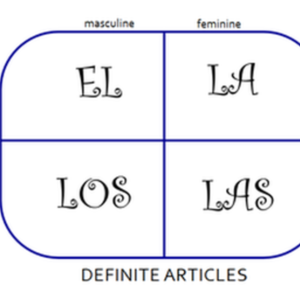
Present continuous
Kursinhalt
Estar + gerundio
Introduction We use the present construction with estar + gerundio when we want to emphasise the process or progression of an action. This continuous form of the present is somewhat equivalent to the English present progressive.
Use:
- Emphasises the progression of an action (can be at the moment of speaking but doesn't have to be)
Example: Me está mirando de forma extraña. (He's looking at me (right now) in such a odd way.)
- Si está callado es porque está tramando algo. If he's quiet, that means he's buty plotting something.
- Can also be used to emphasise that an action takes place regularly . Example: Siempre está diciendo tonterías e intentando morder los dedos de los que pasan de lante de la jaula. (Hes always saying silly things and trying to bite the finger ofany one who passes his cage.)
Construction
conjugate the verb estar in present and then add the main verb in gerund form
ar = ando
er = iendo
ir = iendo

Exceptions
Introduction We use the present construction with estar + gerundio when we want to emphasise the process or progression of an action. This continuous form of the present is somewhat equivalent to the English present progressive.
Use:
- Emphasises the progression of an action (can be at the moment of speaking but doesn't have to be)
Example: Me está mirando de forma extraña. (He's looking at me (right now) in such a odd way.)
- Si está callado es porque está tramando algo. If he's quiet, that means he's buty plotting something.
- Can also be used to emphasise that an action takes place regularly . Example: Siempre está diciendo tonterías e intentando morder los dedos de los que pasan de lante de la jaula. (Hes always saying silly things and trying to bite the finger ofany one who passes his cage.)
Construction
conjugate the verb estar in present and then add the main verb in gerund form
ar = ando
er = iendo
ir = iendo

Exceptions
In the case of the verbs whose root vowel changes in the singular and the 3rd person plural (e- i/ie, o - ue), this vowel also changes in the getund.
decir = diciendo
divertir = divirtiendo
dormir = durmiendo
morir = muriendo
pedir = pidiendo
poder = pudiendo
servir = sirviendo
For verbs ending in er/ir and whose word stem ends with a vowel, we construct the gerund with yendo (not: iendo)
Example: construir- construyendo
ir - yendo
leer leyendo
oir - oyendo
traer trayendo
Usage of wh questions
decir = diciendo
divertir = divirtiendo
dormir = durmiendo
morir = muriendo
pedir = pidiendo
poder = pudiendo
servir = sirviendo
For verbs ending in er/ir and whose word stem ends with a vowel, we construct the gerund with yendo (not: iendo)
Example: construir- construyendo
ir - yendo
leer leyendo
oir - oyendo
traer trayendo
Usage of wh questions
other examples and exercises.
Cafetalk Rücktrittsregelung
Vor der Bestätigung einer Kursbuchung
- Stornierung jederzeit möglich
Nach der Bestätigung einer Kursbuchung
- Mehr als 24 Stunden vor Kursbeginn→ Stornierung jederzeit möglich
- Weniger als 24 Stunden vor Kursbeginn→ Stornogebühren können anfallen.
-
No-Show→ Stornogebühren können anfallen.
(Der Betrag kann je nach TutorIn variieren. Bitte nimm Kontakt mit Deiner Tutorin/ Deinem Tutor auf.)
Alle Kurse von dieser/m TutorIn
-
-


Partes de la oración, possessive adjectives and more.
Possessive adjectives, demostratives,60 Min. 2,100P -


Artículos definidos e indefinidos. Género
Definite and indefinite articles. Genres and numbers in Spanish.45 Min. 1,800P -


Saludos (greetings) Self introduction
How to say hi and good bye. (different greetings)20 Min. 800P




